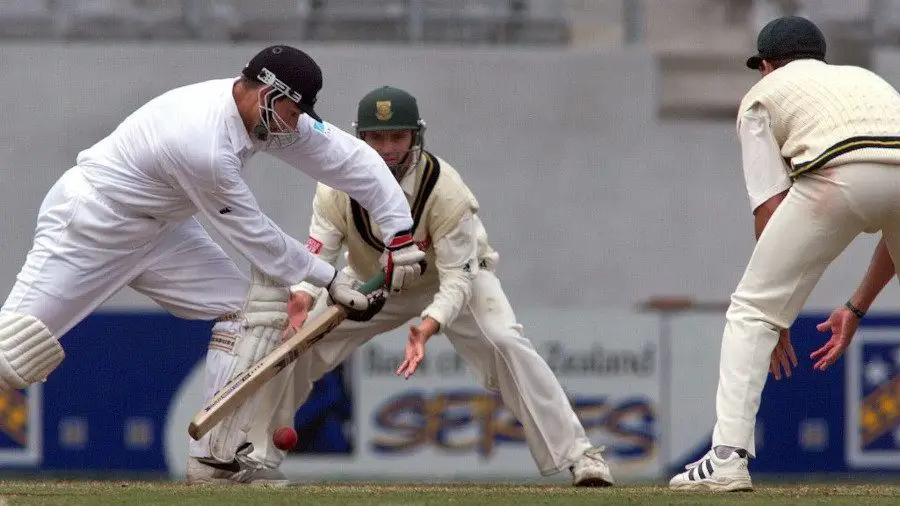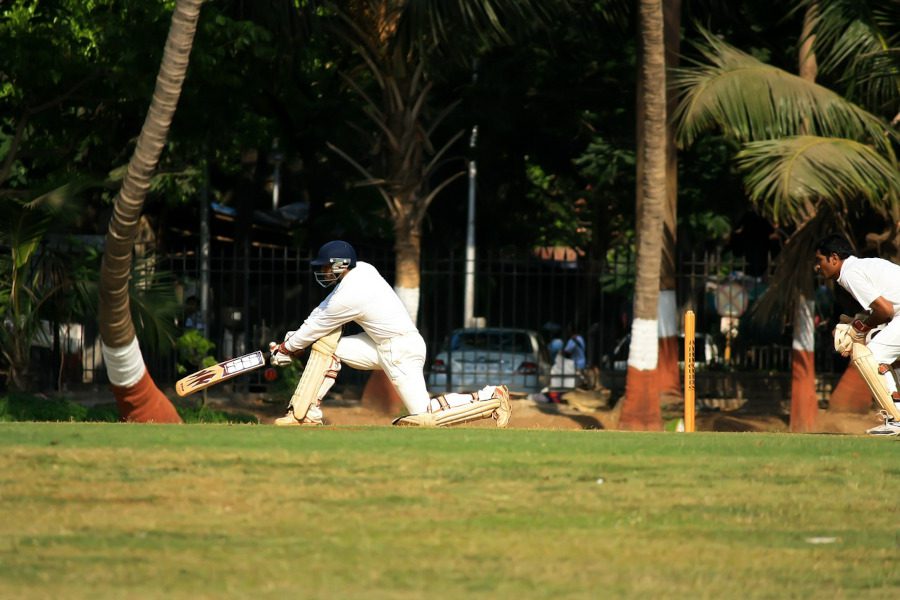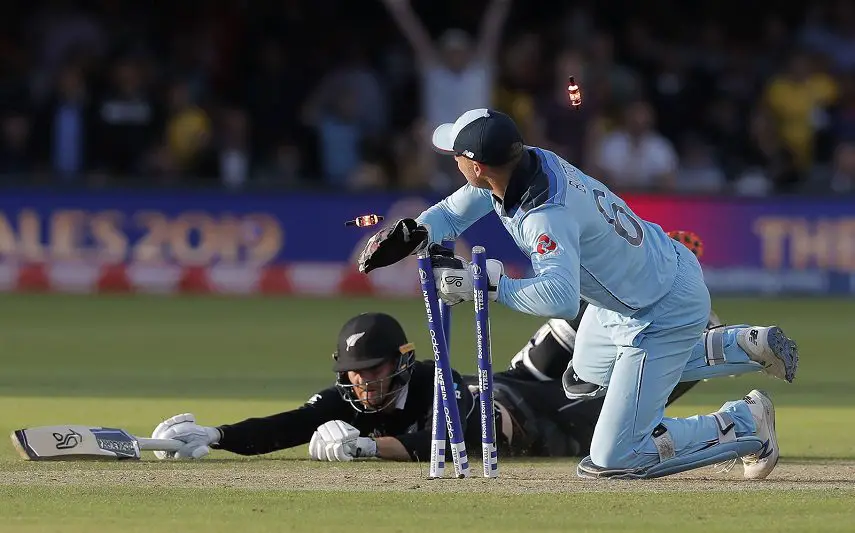Table of Contents
A ‘duck’ is an unwanted thing for any cricketer. Whether they are an experienced, capable batsman or a tailender, it’s something to avoid. Scoring a duck in cricket simply means that the batter hasn’t scored any runs in their innings before being dismissed.
Over the years, the game has evolved to include terms for a number of different ducks, from golden ducks to a diamond duck, depending on a specific point in their innings, or in the game, that the player was dismissed.
What is a Duck in Cricket?
Making a ‘duck’ refers specifically to a batsman who has scored no runs in their completed innings. It’s important to note the distinction that the player in question has been dismissed. If they are not out and the team’s innings has come to its conclusion, it’s not appropriate to say that the batter has ‘made a duck.’ They were not out and therefore had the potential to make at least one run.
It’s the worst possible outcome for an individual batsman and a whole host of statistics and records have been built up around the duck phenomenon.
The first duck in cricket was seen at the very first Test Match between England and Australia in 1877. The Australian Ned Gregory was caught by the English Andrew Greenwood known for his deep fielding off James Lillywhite’s delivery.
What is the Meaning Behind Ducks in Cricket?
While no-one is entirely sure who first coined the term, the origin of the word ‘duck’ is a simple one. In addition, there is no great dispute over the phrase, unlike there is with certain other forms of cricket jargon.
When written as a number in the scorebook, the figure zero ( 0 ), is said to resemble a duck’s egg. The classic oval shape was clearly reminiscent of a duck’s egg to some early scorers as it’s been in place for centuries.
In those early days, a duck’s egg may have been the most common term for an completed innings of nought. In time, it began to be abbreviated and it’s universally referred to as a ‘duck’ in modern day cricket. Certain dictionaries claim that both terms are still used and that both are acceptable. However, that is to be disputed and the abbreviated ‘duck’ really is the sole word used at present.
Who Scored the Most Ducks in Test Cricket?
The arguable glory of scoring the most ducks in the history of test cricket is held by Courtney Walsh (West Indies), who was dismissed with no runs scored no less than 43 times as of 2021. For the top 10 list of test players with the most ducks, check the chart below. To no surprise, the list features mostly bowlers with no forte in batting.
Types of Ducks in Cricket
As an addition to the phrase, the term ‘duck’ has spawned a whole new set of phrases attached to it. The different types of ducks relate to a specific point in the player’s innings, or in the wider game, to all the ways a batsman can be dismissed.
Regular
A generic ‘duck’ is achieved when the player has faced at least four balls before they are dismissed. It’s just a ‘duck’ with no prefix arriving before the word.
Golden Duck
A golden duck occurs when the batter is dismissed on the very first ball that they have faced. Golden duck is used throughout the cricketing world and there are no known variations.
It’s thought that the phrase ‘golden duck’ was coined as the colour gold is synonymous with coming first – i.e. winning a Gold Medal at the Olympics.
Silver Duck
When a batsman has made a silver duck, they have been dismissed, without scoring, on the second ball of their innings. If they have scored at least one run on that first ball, then they haven’t made a duck. However, if no runs are scored by the batter, it’s said that they have been out for a ‘silver duck.’
This term isn’t widely used and many commentators, players and cricket fans will merely state that the player in question has been out for a regular duck. However, silver duck remains as a recognised cricketing term.
Bronze Duck
A batsman can be dismissed for a Bronze Duck on the third ball of their innings. Once again, the term can only apply if they are out without scoring a single run.
A bronze duck is another phrase that isn’t used all the way around the cricketing world. In many cases, it will merely be noted that the batter in question has been dismissed for a normal duck. It’s another rare term in the ‘duck’ lexicon but still the bronze duck is in use in some parts of the world.


Diamond Duck
The term ‘Diamond Duck’ is used in instances where a batsman has been dismissed without facing their first ball. By definition, they are unable to score any runs as they have not faced a single ball.
A diamond duck is a rare event and it will usually occur when a batsman is run out off a wide ball before they have had a chance to face their first ball – which is legal. At the very end of limited overs matches when the batting side are looking to score as many runs as possible, it’s common for batters to sacrifice their wickets. Diamond Ducks are more common in this scenario but they can occur at any stage in the match.
Potentially, a non-striking batsman can also be given out for Obstructing the Field. Another form of dismissal where a Diamond Duck can occur is via Timed Out where any batsman can be given out before they’ve even reached the crease.
These are the types of dismissals involved and, as long as the batter has been dismissed for nought without facing, they are said to have made a ‘diamond duck.’


Titanium Duck
A Titanium Duck is similar to a Diamond Duck in the sense that the batsman in question is dismissed for nought without facing a delivery. However, the distinction here is that the batter is given out on the very first ball of his team’s innings.
Once again, run outs are the most common cause of this dismissal but there can be other instances. It’s not a widely used term but that’s largely due to the fact that it’s extremely rare for this set of circumstances to occur.
Royal Duck
A batsman is said to be dismissed for a Royal Duck when they are out without scoring from the first ball of their team’s innings. Unlike a titanium duck, they will have faced a delivery so other forms of dismissal, including bowled, caught and lbw, come into play.
In some parts of the world, the phrase ‘platinum duck’ is used instead. Both terms are acceptable and in use but ‘royal duck’ tends to be the more common term in modern day cricket.
Laughing Duck
A Laughing Duck occurs when a batsman is dismissed for nought on the very last ball of his or her team’s innings. A laughing duck is one of the more rare terms and it can often be referred to as a regular duck, as it is not so well known part of the cricket jargon.
Potentially, the phrase has come about due to the use of cartoon duck graphics by TV broadcasters. As the batsman leaves the field without scoring, they can often be accompanied by a chattering, cackling ‘laughing duck’ at the bottom of the screen. TV companies use these for all batsmen but this may be where the phrase originates.
Golden Goose
Similarly to a golden duck, a Golden Goose applies if a batsman is dismissed from the first ball of the first match of his team’s new season.
It’s another rare term in relation to ducks but it’s use is increasing.
Pairs in Cricket
A Pair
In test matches and first class cricket, batsmen have the chance to play two innings in the game. Therefore, there is the potential to make two ducks. If there are two, regular ducks made in the match, it’s said that the batsman has been dismissed for a ‘pair’.
The phrase is believed to originate from the fact that two zeros, ( 0 0 ) in a scorebook, resembles a pair of spectacles.
King Pair
To record a King Pair, a batsman must firstly record two golden ducks in the same match.
The difference between a King Pair and a regular Pair is that the batter in question has to be dismissed by each of the first two balls that they receive. If this happens, they have achieved a King Pair.
Conclusion
The term ‘duck’ has been used since the early days of cricket and it is therefore one of the most enduring pieces of jargon within the game. Over time, it has expanded to include all of the terms listed in this round up.
Whether it’s a regular duck, a platinum duck, a golden goose or any of the other terms used, the phrases all have things in common. No matter how the batsman in question has been dismissed from all ten ways they can get out, the one thing that’s important is that the batsman gets out without scoring – so clearly this is something that they wish to avoid.



